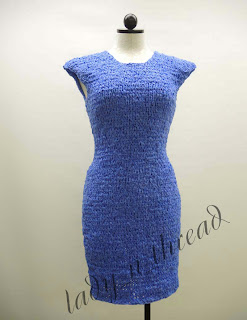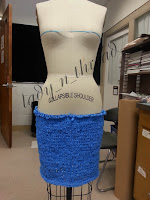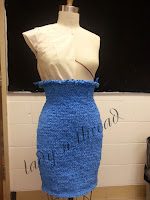Supplies needed:
- Crochet hook: 10
- Size 20 thread
Special Stitches:
- Beginning Petal Tip Stitch: :
Ch 4, (yo 2 times, insert hook into next stitch, yo, draw lp through, yo, draw through 2 lps on hook 2 times) 5 times, yo, draw through 6 lps on hook, ch 1.
- Petal Tip Stitch:
(Yo 2 times, insert hook into next stitch, yo, draw lp through, yo, draw through 2 lps on hook 2 times) 6 times, yo, draw through 7 lps on hook, ch 1.
Notes:
- Work tight chains.
- All joins are with a sl st to the first stitch of the round.
PATTERN
Begin: Chain 8, join to form circle.
Rnd 1: Ch 1, work 16 sc in circle; join.
Rnd 2: Ch 1, sc in same st, ch 3, *sk 1 st, sc in next st, ch 3, repeat from * around; join. (8 spaces)
Rnd 3: Sl st into first ch 3 space, ch 4, 3 tr in same sp, ch 2, * 4 tr in next ch 3 space, ch 2, repeat from * around; join.
Rnd 4: Ch 4, tr in same sp, tr in next 2 sts, 2 tr in next st, *ch 3, sk ch 2 sp, 2 tr in next st, tr in next 2 sts, work 2 tr in next st, ch 3, repeat from * around; join.
Rnd 5: Ch 4, tr in next 5 sts, * (ch 4, sk ch-3 sp, 2 tr in next st, tr in next 2 sts, ch 4, tr in next 2 sts, 2 tr in next st, ch 4), sk ch-3 sp, tr in next 6 sts, * repeat from * to * 2 times more, then repeat from ( to ) once, join.
Rnd 6: Work beginning petal tip stitch, *[ch 5, sk ch-4 sp, tr in next 4 sts, ch 3, in ch-4 sp work (tr, ch 5, tr), ch 3, tr in next 4 sts, ch 5], sk ch-4 sp, work petal tip stitch,* repeat from * to * 2 times more then repeat from [ to ] once, join to beg. petal tip.
Rnd 7: Ch 1, sc in same st, *[ch 4, sk ch-5 sp, tr in next 4 sts, ch 4, in corner ch-5 sp work (4 tr, ch 4, 4 tr) ch 4, sk ch-3 space, tr in next 4 sts, ch 4], sc in tip of petal,* repeat from * to * 2 times more then repeat from [ to ] once, join.
Rnd 8: Ch 1, sc in same st, *[ch 5, sk ch-4 sp, tr in next 4 sts] 2 times, ch 3, in corner ch-4 sp work (tr, ch 5, tr), ch 3, tr in next 4 sts, repeat from [ to ] 2 times, ch 5, sk ch-4 sp, sc in next st, repeat from * to * around ending with a join to beg. sc.
Joining motifs: Attach motifs when working the chains of Round 8. Substitute the middle chains of the motif being worked with a slip stitch into the corresponding middle chain of the motif being attaching to.
You may print this pattern out and use it for your own personal use. DO NOT copy it to use on your own site or for any other reason. You may link to this blog page.
Every effort has been made to provide accurate and complete instructions.
|

































